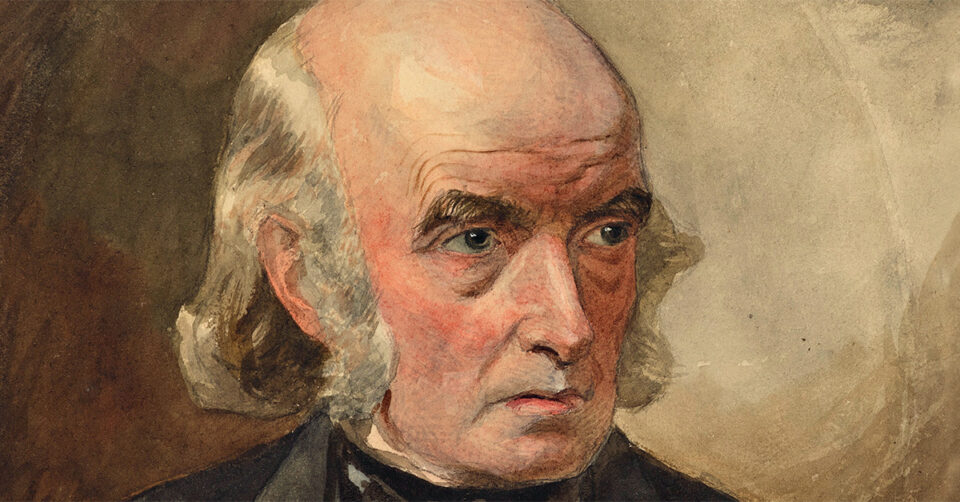
In considering our next fine press publication, we looked at suggestions to print Omar Khayyám’s Rubáiyát. At first, we were not sure the world needed yet another Rubáiyát on its bookshelves, as hundreds of editions have been produced since they were first printed anonymously by Edward Fitzgerald in 1859. This text posed a number of issues we needed to resolve.
The Author
Translating poetry from one language to another is fraught with difficulties, especially between languages as different as English and Persian. The translator attempts to find the best way to reflect the original author’s intentions in a foreign language.
In this case, to make matters more confusing, Omar Khayyám (1048–1131) was well known as a mathematician and astronomer. However, none of his contemporaries refer to his poetry, and the collections of quatrains attributed to him do not appear in manuscripts until well after his death. The link to their original author, while traditionally accepted, remains uncertain.
The Translator
The sometimes whimsical translation of Edward FitzGerald (1809–1883) was the first attempt to express the beauty and meaning of these short poems in English. And of the numerous translations available today, FitzGerald’s is by far the most popular. (Many translations into other languages are based on FitzGerald instead of the original Persian texts.)
Other, later, translations of the quatrains often claim to be, and may in fact be, more accurate, but none of those we saw touched us the way FitzGerald’s did.
Edward FitzGerald never intended his work to be an academically correct “translation” or a complete edition of Omar Khayyám’s Rubáiyát. He worked entirely from two Persian manuscripts supplied to him by his Persian teacher, Edward Byles Cowell. Of the quatrains chosen by FitzGerald, an analysis published in 1903 by Edward Heron-Allen found that:
- 49 are “faithful and beautiful paraphrases of single quatrains” found in the two manuscripts
- 44 are can be considered “composite” quatrains, with lines traceable to more than one original quatrain
- 2 are inspired by quatrains published in Jean Baptiste Nicolas’s French edition of 1863
- 2 are inventions of Edward FitzGerald reflecting the whole spirit of the original poems
- 2 are traceable to passages by Attar of Nishapur
- 2 are inspired by Odes of Hafiz
- 3 were apparently inventions of FitzGerald (but again suppressed by him in later editions).
In other words, in spite of the few flights of imagination occasionally introduced by FitzGerald, the bulk of his work accurately reflects the matter and spirit of the poems he chose from the manuscripts.

The Edition
FitzGerald ordered the poems to narrate a day in the life of Omar Khayyám, but over the course of five editions he continued to add, subtract, edit, and tweak the positions of individual quatrains, re-arranging them like painted tiles on a wall.
“It is most ingeniously tesselated into a sort of Epicurean Eclogue in a Persian Garden.”
Edward FitzGerald to Edward Cowell
However, although individual quatrains may have technically been improved, we still preferred the vitality and spirit of the First Edition.
The Resolution
Any concerns we had about the validity of FitzGerald’s translation, however, were dissolved when we discovered a short passage from an essay by Jorge Luis Borges titled The Enigma of Edward FitzGerald.
“A miracle happens: from the fortuitous conjunction of a Persian astronomer who condescended to write poetry and an eccentric Englishman who peruses Oriental and Hispanic books, perhaps without understanding them completely, emerges an extraordinary poet who resembles neither of them… All collaboration is mysterious. That of the Englishman and the Persian was even more so, for the two were quite different, and perhaps in life might not have been friends; death and vicissitudes and time led one to know the other and make them into a single poet.”
In the end, we were left with the sheer inspiration and beauty of this “translation”, first recognized by Swinburne and his friends, which continues to this day to lift our hearts.
The Presentation
While many other editions of these poems framed their pages with Persian-style marginal decorations, evoking their antique middle-eastern origin, we chose to present our text as the beautiful Victorian English poetry that it is. The only exceptions being an ornament taken from a Persian painted ceramic plate and a nod to earlier use of peacock feathers in the marbled and printed endpapers.
Bibliographic Sources
Edward FitzGerald: Rubáiyát of Omar Khayyám, A Critical Edition. Edited by Christopher Decker. University of Virginia Press, Charlottesville and London, 1997.
The Sufistic Quatrains of Omar Khayyam. Robert Arnot, Edward Heron-Allen, et al. Willey Book Co., New York, 1903.
